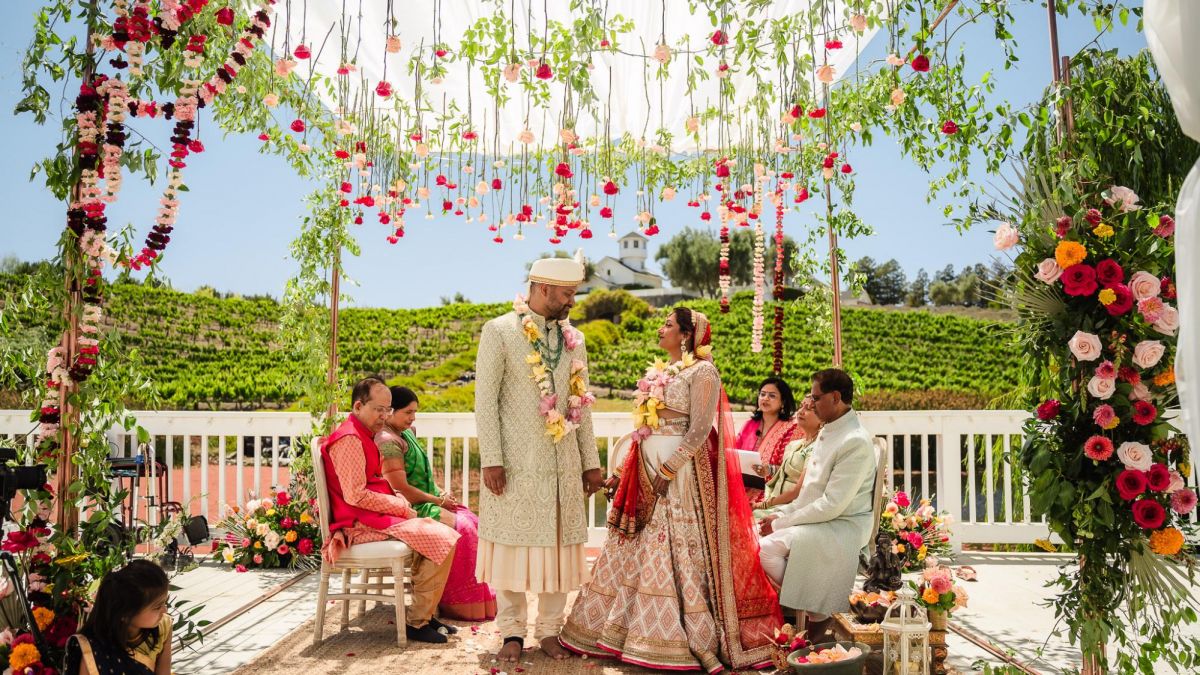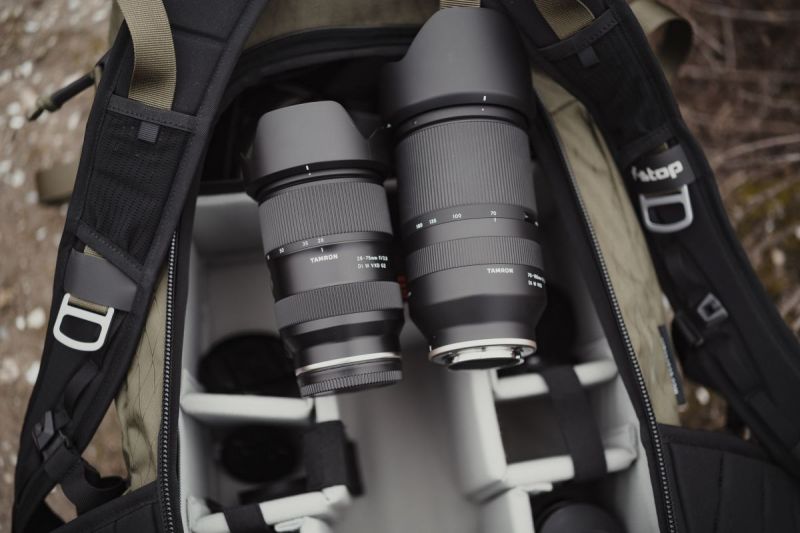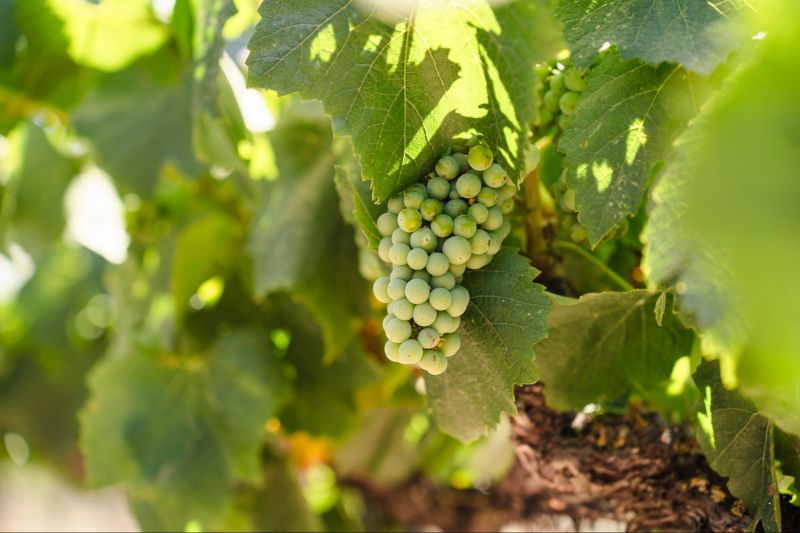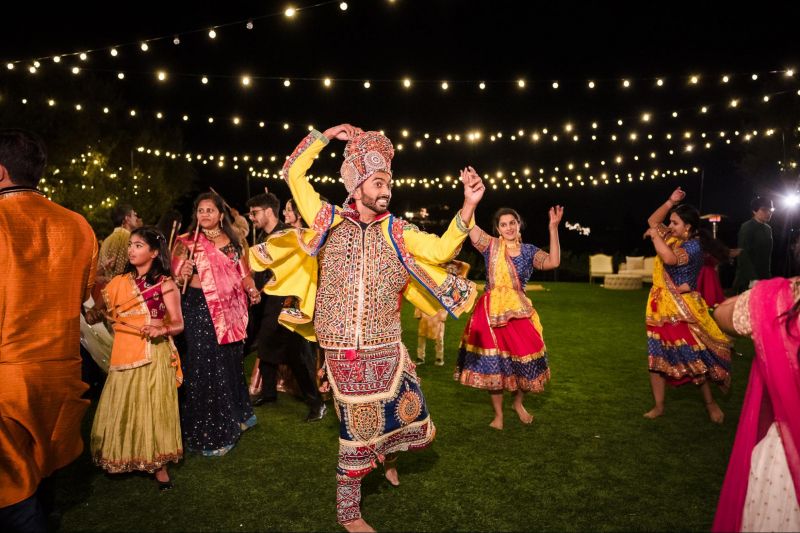
A wedding photographer’s job can often be summed up very simply: be ready for anything! Actually, we could even say, “Be ready for EVERYTHING!” One minute you’re taking pictures of jewelry and shoes, the next minute you’re taking pictures of doves being released, or a bride throwing rice over her shoulder, or a groom getting his shoes stolen! A wedding day has all kinds of things happening, all day long. This is why it’s no surprise that we get one question extremely often: “Which lens is the ‘best’ for wedding photography?” Honestly, there isn’t only one best lens, but we can answer an even better question: Which focal lengths and apertures do we actually take our best and must-have wedding photos with? (See how rewording this question can create much better results?)
This is where the Tamron 28-75mm F/2.8 Di III VXD G2 enters the picture. Simply put, if we had to pick five must-have wedding photos, or categories of photos, they would all be possible with a lens like this. Why the Tamron, in particular? Well, it’s a mid-range f/2.8 zoom, like many others, but it also makes a unique, attractive offering, too: it’s lightweight, compact, and relatively affordable.
You see, historically, the 24-70mm f2.8’s for both DSLR and mirrorless cameras have all been enormous, heavy beasts that wedding photographers had a love-hate relationship with. They were lenses that merely “got the job done”, even though your wrist would really hurt by the end of a 10-12+ hour day.
This is one of the main reasons why we gave the G2 version of the 28-75mm f2.8 a positive review, here. It’s the mid-range zoom we always wanted for long wedding days. In this article, we’re going to describe five different types of photos that you should always look for on a wedding day. So, while we simply don’t recommend showing up to a paid wedding job with just one lens, you’re definitely going to be doing a lot of photos at these focal lengths and at these apertures…
Things To Watch Out For When Photographing A Wedding
Before we dive in, here are four general tips for how to go into a wedding as a photographer, and make sure you are covering all the important moments of a couple’s special day:
- Keep Your Eyes Open For What Else Is Going On. Even when there is an obvious moment unfolding in front of you, such as vows being exchanged in a church ceremony, don’t forget to keep glancing around. Is mom or dad wiping a tear? A photojournalist’s job is to not just create one artistic image of each big moment, but to tell the entire story of an event.
- PRO TIP: If you notice one of these moments, but you don’t have your f/2.8 telephoto zoom currently mounted, (such as the Tamron 70-180mm f2.8, our other favorite wedding lens) don’t fumble with switching lenses! Just bump your full-frame mirrorless camera into 1.5x crop mode, and you’ll have ~110mm at your disposal.
- Be Ready For Anything / Be Flexible If Things Don’t Go As Planned. Unfortunately, part of the “anything can happen” mantra we mentioned earlier is this: sometimes, things just don’t go as planned. Rain forces you inside. Harsh sun restricts where you can do formal portraits. Or, of course, everything is just running late. In these moments, the best thing you can do is, just make an “executive decision” and start taking photos. Alternatively, capture sample photos in different lighting, show the couple, and let them choose their favorite option.
- Ask The Client What Is Most Important To Them. This is something to discuss with clients before the wedding day. Would they rather have you capture nothing but candid journalistic imagery of their day unfolding naturally, or would they rather have you do a bit of taking charge, asking people for a smile, suggesting a change of lighting, etc? Some photographers may have a well-defined style that already dictates the answer to this question, in which case you simply need to convey this important note to clients before they even book. Other photographers may be happy to offer either style of wedding photojournalism. Either way, get the clients’ permission to prioritize a particular style, or even a specific image, beforehand, instead of putting them on the spot on their wedding day.
- Don’t Be Afraid To Get In The Action! One mistake that some wedding photographers make at first, especially if they are more shy or introverted, is to assume that you’re supposed to always keep your distance and stay out of the way. While this may be true when it comes to potentially blocking the view of wedding guests during certain crucial moments such as a ring exchange, first kiss, or a reception toast, (this is when we reach for our 70-180mm f2.8 or 70-200mm) …the rest of the day, especially candid environments, is when you have permission to act like you’re one of the guests or even a family member. Get up close! Instead of capturing everything at 85mm, 105mm, or 135mm etc, using 35mm, 50mm, or even 28mm as your go-to creative zone will create MUCH more genuine moments of intimacy.
Five Must-Have Wedding Photos With The Tamron 28-75mm f/2.8

Every wedding can be very different, so we are not going to list specific, exact photos that might not even be relevant some of the time. Instead, this list will function more like five guidelines for categories of photos to keep in mind. So, let’s get to it!
1. Must-Have Wedding Photos: Portraits (Every Type, Everywhere!)

When it comes to portraits at a wedding, you should be a walking Oprah meme? “You get a portrait, you get a portrait, you all get portraits!” Okay, seriously, the absolute best way to make almost every client happy is to take every opportunity to capture great portraits of as many people as you can, by themselves and with other people. Bride, groom, (of course!) parents, siblings, bridal party, friends, etc. Not only the must-have posed formal portraits of the VIPs, but as many other wedding guests as you can.
In other words, you find good light, and your digital camera’s memory cards hopefully have the capacity for literally thousands of photos. So, after you photograph the bride, grab individual portraits of the mom, dad, siblings, bridesmaids, …everyone! Whatever you have time for, go for it.
Some types of clients may prefer you to keep things more casual and candid, instead of posed portraits. In this case, just keep scanning every scene for whoever is smiling, and standing in good light!
Other times, clients will want the almost literal red-carpet treatment, requesting a posed, formal portrait with every single guest. As we said at the beginning, be ready for anything!
Either way, our rule of thumb is this: whatever your creative style might be, or whatever the clients’ preferences are, just find (or create) good light, and maximize it. Whether it is the crowd gathering and greeting each other before/after a ceremony, or at the cocktail hour before the reception, always be on the lookout for opportunities.
Don’t be afraid to be direct and ask people if you can take their picture, and then guide them to turn or even take a few steps into that optimal, gorgeous lighting. Chances are that if you show them one of the pictures on the back of your camera, and they’re smiling in flattering, soft light, …you’ll have no shortage of additional requests for pictures! This can be delegated to a 2nd photographer, of course, if you’re busy with the bride & groom’s portraits.

When you’re switching back and forth between portraits of 1-2 people and portraits of much larger groups, a 24-70mm lens is often preferred. However, honestly, 24mm can be a bad idea for large groups, because anyone framed at the very edge of the image will appear very distorted! So, whenever you have the space, aim for using ~35mm or longer to photograph any group where people’s faces or bodies will be at the very edge of the frame. An f/2.8 aperture ensures that you can blur a background quite nicely, too, without being so shallow that some people’s faces are blurry if they lean forward/backward just a few inches.
Here is one more pro tip for individual portraits at weddings: If you’re working as a team and one photographer is with the bride while the other is with the groom, always double-check with the other photographer so that the separate, individual portraits you capture will look relatively similar. Did you photograph them against a light background or a dark one? Did you do a variety of both fun and serious poses? This is a literal money-making habit for any wedding photographer who creates albums, by the way!
2. Pay Attention To The Little Details for Must-Have Wedding Photos (You Don’t Need a Macro Lens!)

You’ll be surprised at just how close-up you can get with a mid-range zoom such as the Tamron 28-75mm f2.8. For wedding photography, it’s not absolutely necessary to have true “macro” reproduction or magnification, because most of the details and textures at a wedding lend themselves to a mid-range lens with a modest close-focusing distance.

Really, the trick isn’t so much to magnify the subject, but to simply achieve a beautiful background blur for selective focus. This works very well for weddings in particular because it’s all about the context, and the environment of each subject. Couples choose a location, indeed they may hand-pick every little detail because they want it to all go together very well.
So, be sure to get close-up pics of everything that catches your eye! Also, at our studio we maintain the habit of simply asking each client if there are any particular details that they really love that we might otherwise overlook; we take extra care to capture even more photos of those subjects!

Of course, the one exception to this guideline is a close-up, true macro photo of an engagement ring or wedding band. If you love to capture those “giant diamond ring” pics where the ring is filling the image frame, then you can look into a dedicated macro lens…
3. Pay Attention to the Grand Scene, Too, for Must Have Wedding Photos!

Just as important as the close-up detail pictures, of course, are the images of the whole scene. These must-have wedding photos can prove a bit more tricky to capture because often your only opportunity to photograph an entire venue will be when there are various vendors still moving around to set things up. Don’t be afraid to ask everyone to step aside for just a few seconds so you can snap at least one image of the venue, ballroom, etc.
Some photographers may be quick to reach for an ultra-wide lens to make it easier to capture an entire scene from any angle; however, we have a better suggestion. Instead, start around 28mm or so, and try to find a creative composition that includes as many elements as possible. Why do this instead of just going to, say, 14mm or 17mm? Because, quite simply, we find that the medium-wide angle of view just gives the viewer a more natural, immersive perspective that makes them feel like they’re actually standing there! Of course, if you have a lens that goes to 14mm, you can grab that photo too! We just recommend prioritizing “less ultrawide” angles first.
4. The Whole Ceremony

During a ceremony, you might be tempted to put on a 70-200mm or similar telephoto zoom and zoom in tight on the faces and activities. However, don’t forget to grab wider images of the whole scene, too! Whether the ceremony is taking place in a dimly lit church or a bright sunny outdoor venue, there is a nearly 100% chance that if you don’t capture medium-wide images, you won’t fully capture the mood of the ceremony.
Again, as with wide-angle detail photos, you might be tempted to capture very dramatic venues with ultra-wide focal lengths such as 14mm etc. However, especially for a ceremony, we think the most important wide-angle images are the ones where you can still discern who’s who! That ultra-wide view may be a beautiful bonus, but if the people in the image look like ants, then you’re missing a part of the story.
This is why, once again, our go-to focal lengths for a ceremony wide-angle are in the range of 28mm. 24mm or 35mm also work great, but the basic concept is the same: find a balance between seeing (recognizing) faces and appreciating the whole setting of the location.
5. Stay For The Party!

When a wedding day starts to wind down, what happens next at each wedding can look very different, especially across different cultures. You’ll probably feel exhausted and your body might ache from your hands/wrists to your feet/ankles!
The best suggestion we can make is to just stick around and keep taking photos, even if you put yourself in a lower gear and have a more casual approach. This is one reason why we absolutely love more lightweight lenses, (and camera bodies, and on-camera flashes) …because they really make a difference in terms of wrist pain, or, avoiding it. While many flagship mid-range zooms such as 24-70mm f/2.8’s can weigh a lot, it feels great to have a lightweight lens like the Tamron 28-75mm f/2.8, which covers almost the same range.(A 35mm or 28mm prime is great, too!)
Also, blend in with the crowd. A smaller camera setup allows you to act like a wedding guest, which gives better opportunities for more candid moments. Also, remember, don’t just focus on one specific zone such as the dance floor action; know where the bride and groom and their immediate families are, in case they want a photo with a special guest or something. Or, of course, if things are really winding down, you might sneak the couple outside for a night portrait under the stars!
Getting into this habit will allow you to keep creating beautiful must-have wedding photos of memories that the newlywed couple will value. You won’t feel like you have “nothing to do” if there isn’t a high-energy dance floor; there will always be something to take pictures of. As wedding photographers, it’s all about consistently delivering your best product, which is, creatively capturing memories.
Last but not least, one final thing we can recommend as the evening is winding down is this: The more relaxed and “going with the flow” you are about capturing candid moments late in the day/night, the more you won’t be “counting the clock”.
Conclusion | Must-Have Wedding Photos

It should go without saying that a professional wedding photographer is likely going to use more than one lens to photograph a wedding. (Even if you can capture literally every photo with a single lens, if you’re a paid, working pro then you should just have two copies of that lens; you need backup!)
Having said that, our absolute top pick for must-have wedding photos is definitely the mid-range f2.8 zoom. Its versatility is unmatched, from flattering portraits to all manner of details, and virtually every type of candid action that takes place. From start to finish, versatility, or “being ready for anything” is in your job description.
The added bonus of significantly lighter-weight options, such as the Tamron 28-75mm F/2.8 Di III VXD G2, is what earns them our highest recommendation for these five types of photos that you must look for on every wedding day!
For a more varied collection of images with different lenses from a wedding, check out this article about 3 must-have Tamron E-mount Lenses for Wedding Photography. Please leave a comment below if you have your own tips or suggestions for specific types of photos to look for, too!
Matthew Saville
Follow his wilderness nightscape adventures on Instagram: instagram.com/astrolandscapes




Get Connected!